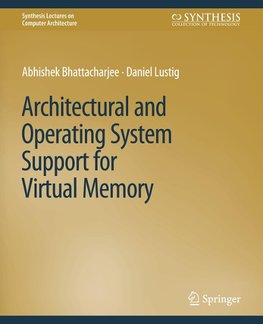
-
 Anglický jazyk
Anglický jazyk
Architectural and Operating System Support for Virtual Memory
Autor: Daniel Lustig
This book provides computer engineers, academic researchers, new graduate students, and seasoned practitioners an end-to-end overview of virtual memory. We begin with a recap of foundational concepts and discuss not only state-of-the-art virtual memory hardware... Viac o knihe
Na objednávku
49.49 €
bežná cena: 54.99 €
O knihe
This book provides computer engineers, academic researchers, new graduate students, and seasoned practitioners an end-to-end overview of virtual memory. We begin with a recap of foundational concepts and discuss not only state-of-the-art virtual memory hardware and software support available today, but also emerging research trends in this space. The span of topics covers processor microarchitecture, memory systems, operating system design, and memory allocation. We show how efficient virtual memory implementations hinge on careful hardware and software cooperation, and we discuss new research directions aimed at addressing emerging problems in this space. Virtual memory is a classic computer science abstraction and one of the pillars of the computing revolution. It has long enabled hardware flexibility, software portability, and overall better security, to name just a few of its powerful benefits. Nearly all user-level programs today take for granted that they will have been freed from the burden of physical memory management by the hardware, the operating system, device drivers, and system libraries. However, despite its ubiquity in systems ranging from warehouse-scale datacenters to embedded Internet of Things (IoT) devices, the overheads of virtual memory are becoming a critical performance bottleneck today. Virtual memory architectures designed for individual CPUs or even individual cores are in many cases struggling to scale up and scale out to today's systems which now increasingly include exotic hardware accelerators (such as GPUs, FPGAs, or DSPs) and emerging memory technologies (such as non-volatile memory), and which run increasingly intensive workloads (such as virtualized and/or "big data" applications). As such, many of the fundamental abstractions and implementation approaches for virtual memory are being augmented, extended, or entirely rebuilt in order to ensure that virtual memory remains viable and performant in the years to come.
- Vydavateľstvo: Springer International Publishing
- Rok vydania: 2017
- Formát: Paperback
- Rozmer: 235 x 191 mm
- Jazyk: Anglický jazyk
- ISBN: 9783031006296











 Nemecký jazyk
Nemecký jazyk 